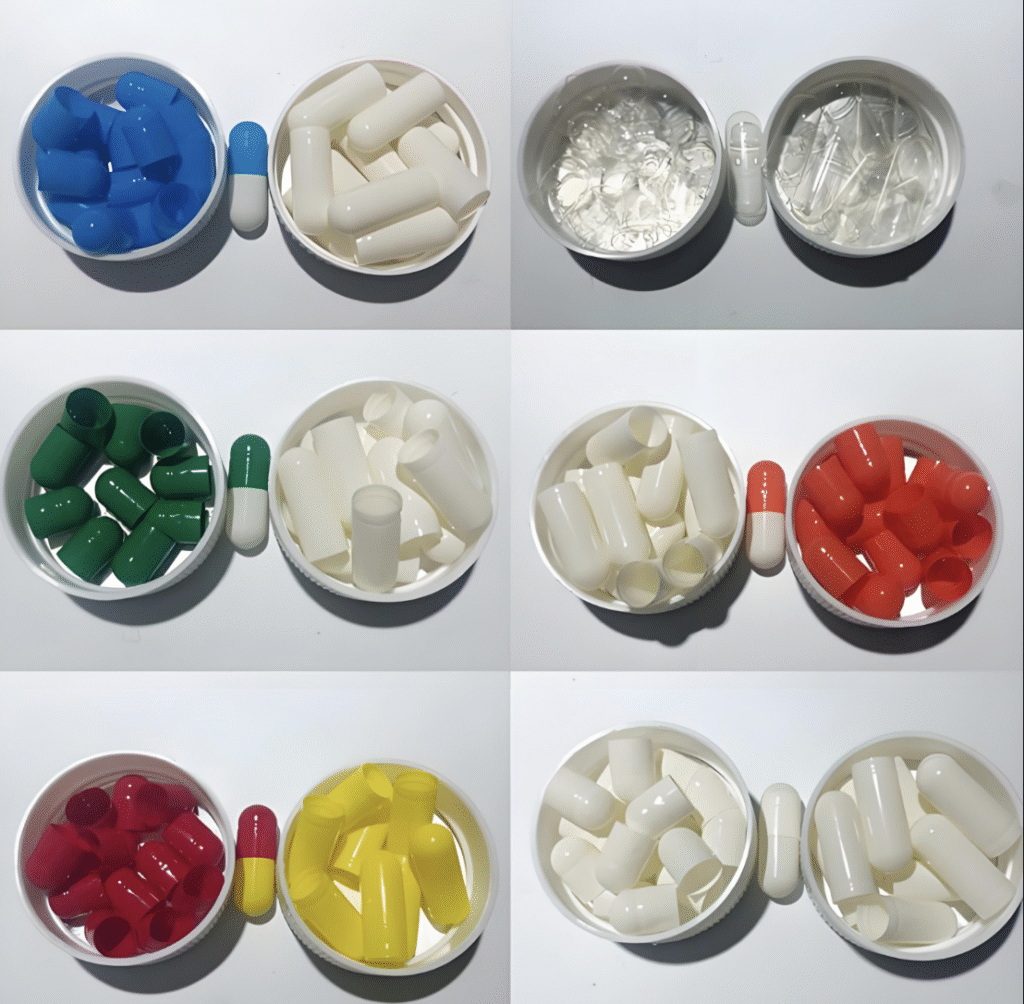[Wroten by ZX VIAL SUPPIES, CHINA]
Common types of hollow capsules
Empty capsules are usually made of gelatin or hydroxypropyl methylcellulose. They can be divided into different types according to their size, shape and color. The most common types are:
- Size 001: Length 23.5mm, Large End Diameter 9.9mm, Small End Diameter 7.1mm;
- Size 0: Length 21.7mm, Large End Diameter 8.5mm, Small End Diameter 6.3mm;
- Size 2: Length 18.5mm, Large End Diameter 8.0mm, Small End Diameter 5.8mm;
- Size 3: Length 16.0mm, Large End Diameter 7.2mm, Small End Diameter 5.2mm;
- Size 4: Length 14.3mm, Large End Diameter 6.6mm, Small End Diameter 4.9mm.
Seperated Empty Gelatin Capsules Size 4
Different models are used in different scenarios. For example, No. 0 hollow capsules are suitable for solid and semi-solid preparations for oral and topical use, while No. 3 and No. 4 hollow capsules are suitable for some powdered medicines.

Hollow capsules are primarily categorized based on their composition and physical properties. Here are the main types:
1. By Composition
(1) Gelatin Capsules
- Hard Gelatin Capsules (HGC):
- Made of gelatin, water, and additives (e.g., plasticizers).
- Used for powders, granules, pellets.
- Available in standard sizes (000 to 5).
- Soft Gelatin Capsules (SGC):
- Contain gelatin, glycerin (plasticizer), and other additives.
- Used for liquids, oils, semi-solids.
- Hermetically sealed (e.g., fish oil, vitamin E).
(2) Non-Gelatin (Vegetarian/Vegan) Capsules
- Hypromellose (HPMC) Capsules:
- Made from plant-derived cellulose.
- Suitable for halal, kosher, vegetarian products.
- Lower moisture content than gelatin.
- Pullulan Capsules:
- Fermented from tapioca.
- Clear, odorless, and oxygen-barrier properties.
- Starch Capsules:
- Rare, used for niche applications.
2. By Functionality
- Enteric-coated Capsules:
- Resist stomach acid; dissolve in intestines.
- Delayed-release Capsules:
- Release drugs at a specific time.
- Liquid-filled Capsules (LFHC):
- Pre-filled with oils or suspensions.
3. By Appearance
- Opaque/Colored Capsules (for light-sensitive drugs).
- Transparent Capsules (to check contents).
- Two-piece Capsules (hard capsules) vs. One-piece (softgels).
Characteristics of Hollow Capsules
Hollow capsules are a common and convenient dosage form with the following advantages:
- They are suitable for most drug packaging applications, allowing for convenient dosage control without exposing the drug.
- The capsule material is corrosion-resistant and edible, withstanding corrosion from many body fluids and medications.
- Drugs can be separated within the capsule to avoid cross-reactions, and multiple drugs can be mixed into a single capsule.
- The capsule pore size can be precisely controlled to align with the drug crystallinity, providing excellent controllability in drug release.
- Hollow capsules are used clinically in a large number of patients, and their safety and reliability are widely accepted.
[Conclusion]
Hollow capsules are available in a variety of sizes. Choosing the appropriate size based on the drug dosage and properties can achieve optimal clinical efficacy. When using hollow capsules, it is important to pay attention to their storage and intended use to avoid compromising the safety and efficacy of the drug.
